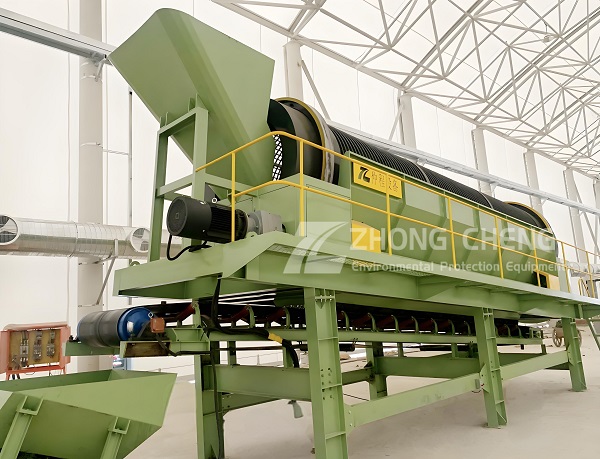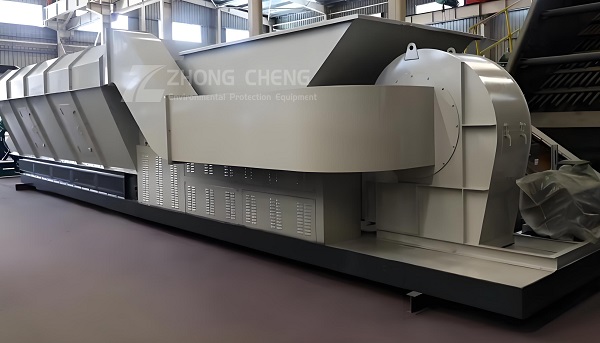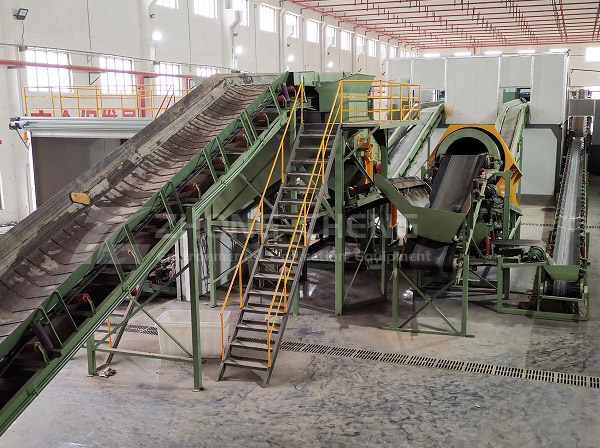Introduction: Stale garbage usually contains a large amount of organic decomposition products, fine soil and various incompletely decomposed solid wastes. When dealing with stale garbage, the design of large-scale screening equipment needs to take into account its special physical properties and composition complexity. With the acceleration of urbanization, the amount of domestic garbage generated is increasing, including a large amount of stale garbage. If these garbage are not treated in a timely and effective manner, they will cause serious pollution to the environment. In order to solve this problem, the emergence of large-scale screening and processing equipment for stale garbage not only improves the efficiency of garbage treatment, but also greatly reduces environmental pollution. It is a major innovation in the field of modern environmental protection.
Large-scale screening and processing equipment for stale garbage mainly separates recyclable materials and harmful components in garbage by mechanical screening. The equipment usually includes feeding system, screening system, conveying system, sorting system and control system. Through screens with different apertures, garbage can be divided into materials of different particle sizes, and then targeted treatment or recycling can be carried out. For the screening and treatment of stale garbage, the main large-scale screening equipment and technologies used include:
1. Pre-crusher: Since stale garbage may contain large items or very compact clumps, the pre-crusher can break these larger objects into smaller sizes for subsequent screening and classification.

Trommel Screen
2. Trommel Screen: The Trommel Screen is one of the most commonly used equipment for stale garbage screening. It can effectively separate materials of different particle sizes, such as larger particles such as coarse sand and stones, and smaller particles such as fine soil and organic residues. By adjusting the size of the screen aperture inside the drum screen, effective separation of materials of different specifications can be achieved.
3. Vibrating Screen: The vibrating screen can accelerate the stratification of materials through strong vibrations, and can perform multi-stage screening on multiple screens at the same time to improve work efficiency. This type of screen is particularly suitable for processing stale garbage with a high moisture content because it can help remove excess moisture and promote drying.

Wind Sifter
4. Wind Sifter: Using airflow, Wind Sifters can efficiently separate lightweight materials such as plastic film, paper and other cellulose materials from stale garbage. This is very important for recycling reusable resources.
5. Magnetic Separator: Used to extract ferromagnetic metals, such as scrap steel products, from stale garbage. This step helps reduce the amount of waste that ends up in landfills and recovers valuable metal resources.
6. Wet Screening System: If the stale garbage contains a lot of mud or other sticky materials, wet screening using water as the medium may be more effective. It can wash away the mud and sand attached to other materials, making subsequent dry screening easier.
7. Optical or Color Sorter: Based on color recognition or near-infrared reflection characteristics, this type of equipment can automatically select specific types of transparent or translucent items such as plastics and glass bottles, thereby achieving more refined classification.

Garbage screening production line
8. Comprehensive screening production line: Sometimes a comprehensive screening production line including the above-mentioned equipment is built to ensure that the stale garbage is most fully classified and processed. Such a production line can be customized according to actual needs, integrating multiple links such as pretreatment, screening, and sorting to form a complete processing flow.
PS: In view of the characteristics of stale garbage, it is crucial to design a reasonable screening process and select suitable equipment. This not only involves how to maximize resource recovery rate, but also relates to environmental protection and reducing secondary pollution. Therefore, when selecting and configuring stale garbage screening and processing equipment, it is necessary to comprehensively consider factors such as technical feasibility, economic cost-effectiveness, and environmental impact. The promotion and application of large-scale screening and processing equipment for stale garbage not only solves the problem of urban garbage disposal, but also promotes the recycling of resources. It is an important means to achieve sustainable development and build ecological civilization. With the continuous development of technology, we have reason to believe that this equipment will bring more cleanliness and harmony to our living environment.
Save Time! Get A Detailed Quotation Quickly.
